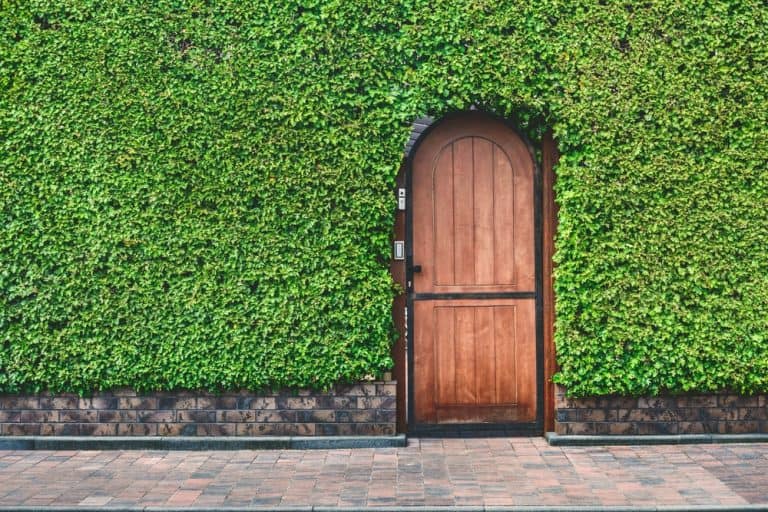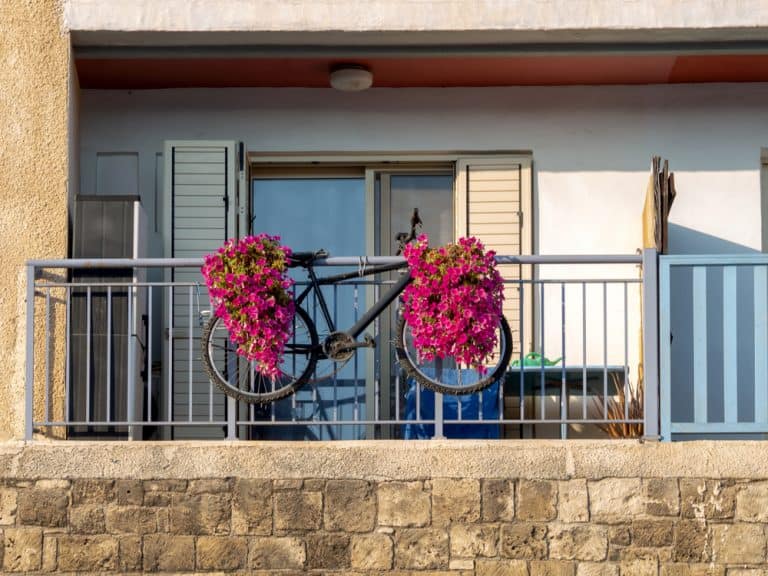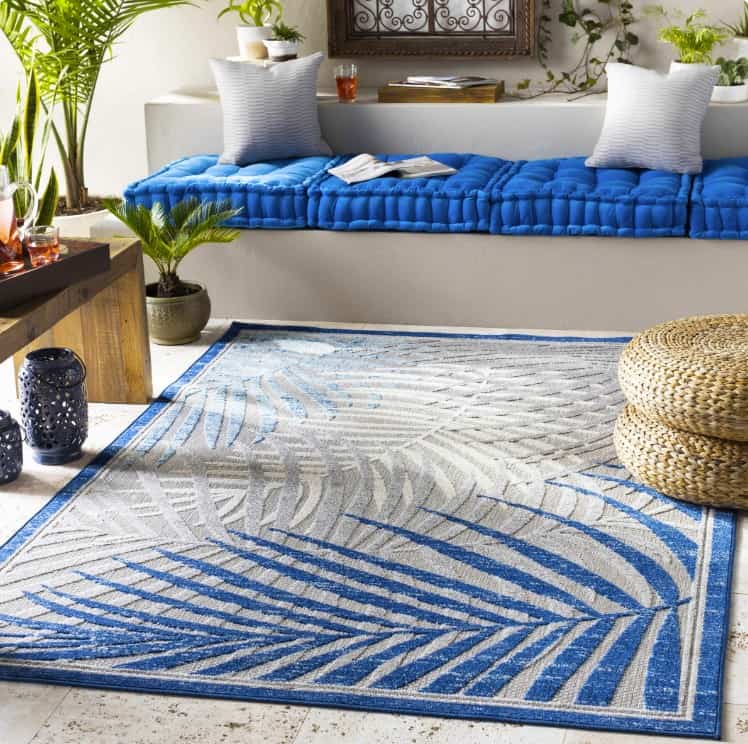6 Ways to Set Up a Privacy Lattice (on a Balcony)
Using a lattice for privacy is just one of the product’s many functions. While you’ll get the best results if you grow plants up, this isn’t always necessary, unlike with a trellis.
Surprisingly, there are plenty of ways to use a privacy lattice on a balcony.
To help get you inspired, we’ll cover a bunch of different ways to set up a lattice for privacy.
Privacy Lattice Benefits
Well, the most important benefits include:
- They’re inexpensive
- They’re easy to install, with or without drilling/nails
- You can grow plants up them for extra privacy
- Privacy lattice panels exist for this exact reason
- They come in different designs, making it easy to fit them into your overall style
Things to Consider Before Setting Up a Privacy Lattice
There’s really not much you need to consider when setting up your lattices. That said, make sure you think about the following:
Permanence
Lattices are a fairly permanent option, if only because they’re not easy to store. If you want something storable, check out our article on privacy screens for some other options. That said, an expandable lattice is probably the most sensible, storable choice.
Maintenance
While lattices don’t need a ton of maintenance, they’re not as long-lasting as metal screens. If you want your privacy lattice to be long-term, make sure the wood is treated first. Alternatively, buy vinyl, plastic or metal privacy lattice panels because they’ll last a lot longer.
Renter restrictions
If you rent your apartment, you probably can’t drill holes or put up nails. This shouldn’t be a massive issue, as we suggest some renter-friendly options below. Just make sure you pay attention to which are most suitable.
6 Ways to Use a Balcony Privacy Lattice
1. Block the railing
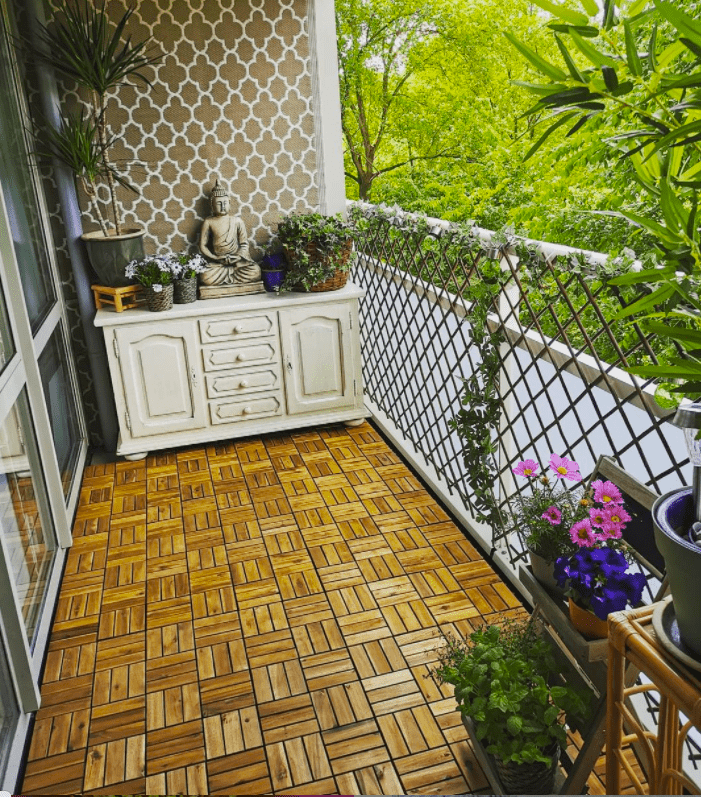
The most obvious use for a privacy lattice is to fix it to your balcony railing. Doing so breaks up the view, so it’s particularly useful for iron railings that have lots of gaps.
Lattices in the photo above and like this one are fairly common, although the holes do have large gaps between them. You can, however, add more privacy with real or artificial plants.
For maximum privacy, grab some artificial ivy stands like this and weave it through the lattice. Not only will you gain more privacy, but you’ll add some greenery to your space!
Installing a lattice against a balcony railing should be a breeze – just use some zip ties.
Pros
- Easy to install
- Renter friendly
- Easiest way to block someone’s view onto your balcony
Cons
- Zip ties might not work great on windy balconies
2. Hang it from the ceiling
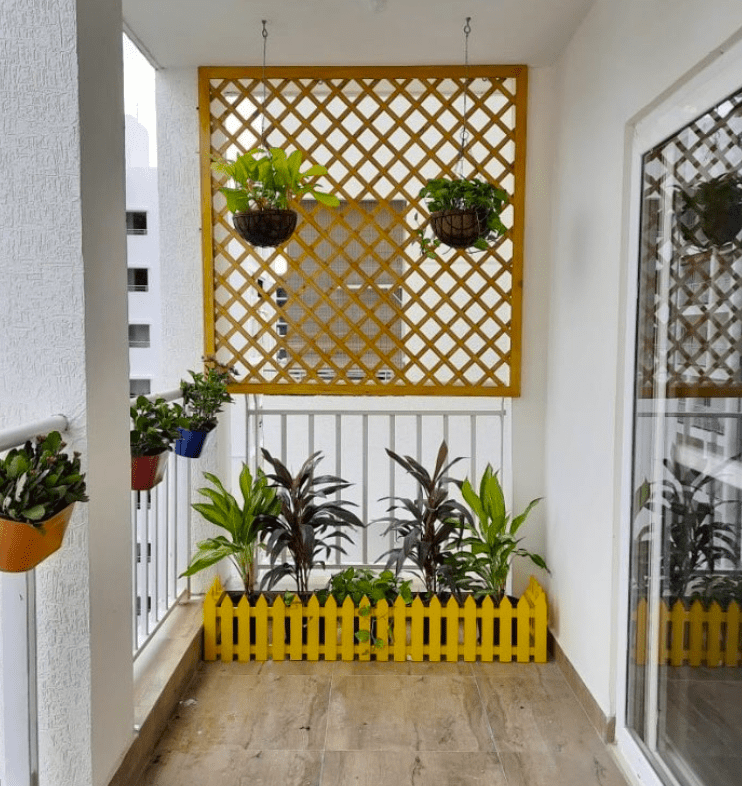
On its own, a privacy lattice hung from your balcony’s ceiling won’t do a ton. But you could use it as the basis for a larger privacy setup, such as hanging curtains or plants to create a more contained space.
The best lattice option for this would be a wall-mounted one (like this). It’s thinner than usual, giving you greater flexibility with placement.
To install, you could either drill holes to hang hooks, or use adhesive hooks (like these) for a renter-friendly option.
Pros
- Good basis for a larger privacy setup
- Ideal for hanging plants or curtains
- Renter friendly
Cons
- Privacy lattice panels on the ceiling won’t do much on their own
3. Freestanding privacy lattice panels
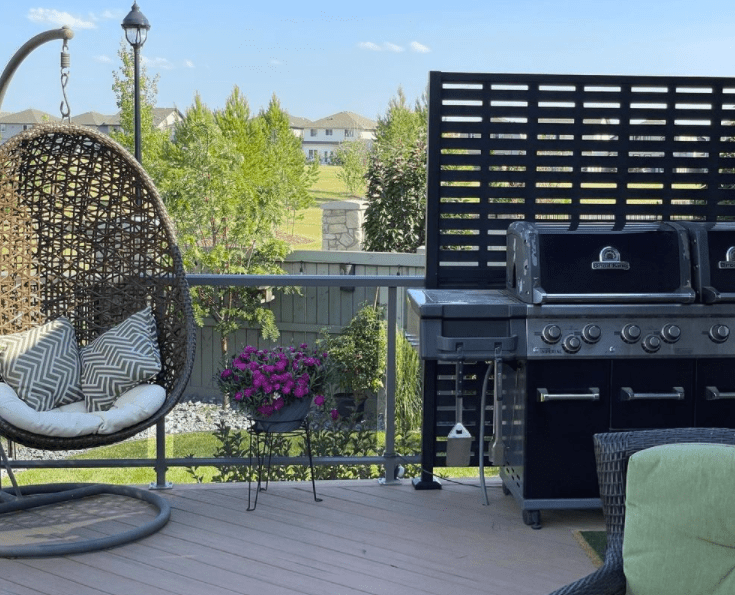
Freestanding panels (such as these) are ideal as space dividers or as a flexible privacy option. Unlike other lattices, they obviously don’t need to be fixed to a surface.
As such, they’d be good for separating, say, an L-shaped balcony or for removing when you don’t need to block your balcony.
But they do come with some downsides. First, you can’t grow plants up them if you want to move them around. Second, they take up quite a bit of floor space and are prone to blowing over. To avoid this, make sure they have big feet.
Pros
- Flexible privacy option
- No installation needed
- Renter friendly
Cons
- You can’t grow plants up them
- Take up floor space
4. Wall topper
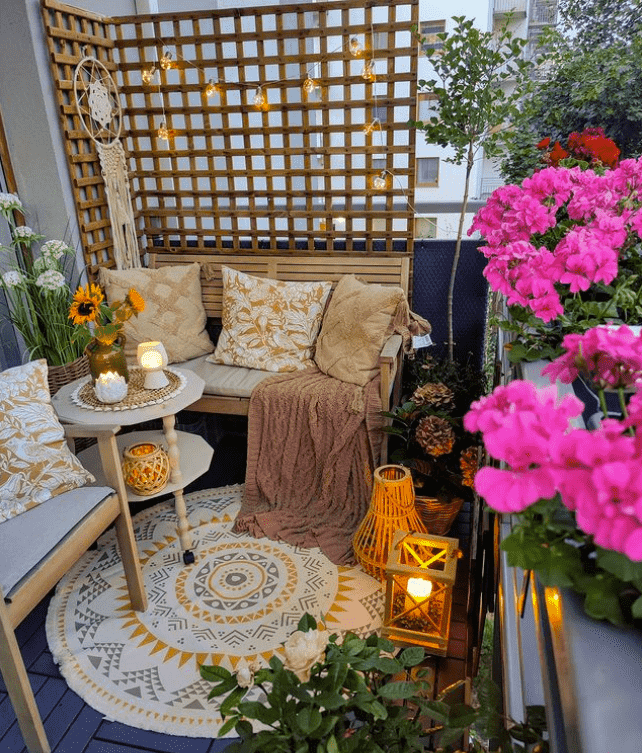
If you have a balcony wall rather than a railing, consider using a privacy lattice as a topper. A small expandable lattice (such as this) is ideal for adding extra height and support for plants.
We’ve got a whole article on privacy toppers, so check that out for more information.
Pros
- Ideal for adding extra height to a wall
- Suitable for different materials
Cons
- Takes more installation than other options
- Probably not renter friendly
5. Plant support
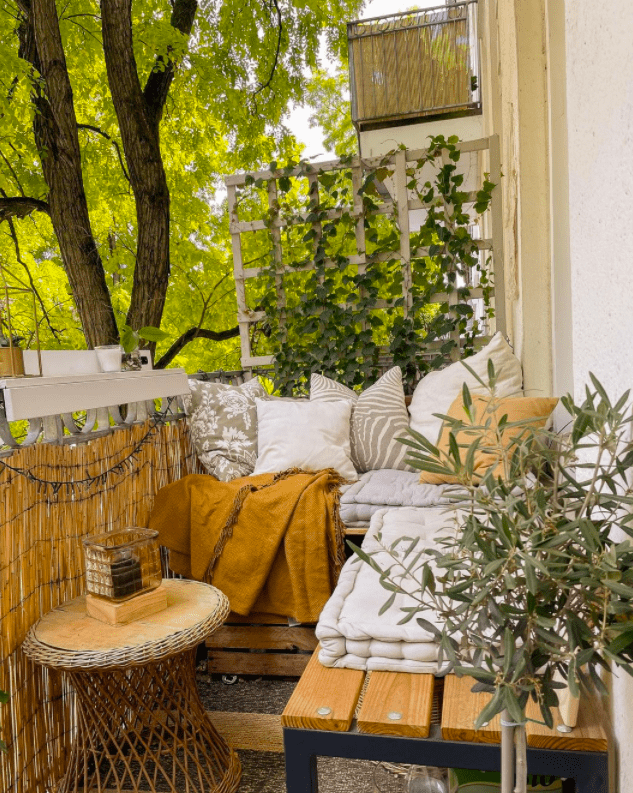
In some ways, this doesn’t deserve its own entry because you won’t really be using the lattice for privacy. Instead, the plants you grow up it will be doing all the work.
However, it’s worth mentioning because it’s essentially why lattices exist. So, you could use a privacy lattice in any of the ways mentioned above as support for big, bushy plants.
As for what plants you grow, that’s up to you. Climbers (e.g. honeysuckle) are ideal for this purpose. You can read our guide on privacy plants for some more inspiration.
The main downside of using a privacy lattice for plants is that, over time, it can sustain damage. Lattices aren’t super durable anyway, and plenty of plants use suckers or snap the wood by gripping onto it.
Pros
- Plants are ideal for privacy
- Lattices are a good basis for plant support
- Gives you more growing room on smaller balconies
Cons
- Plants can damage lattices over time
6. Blocking off areas
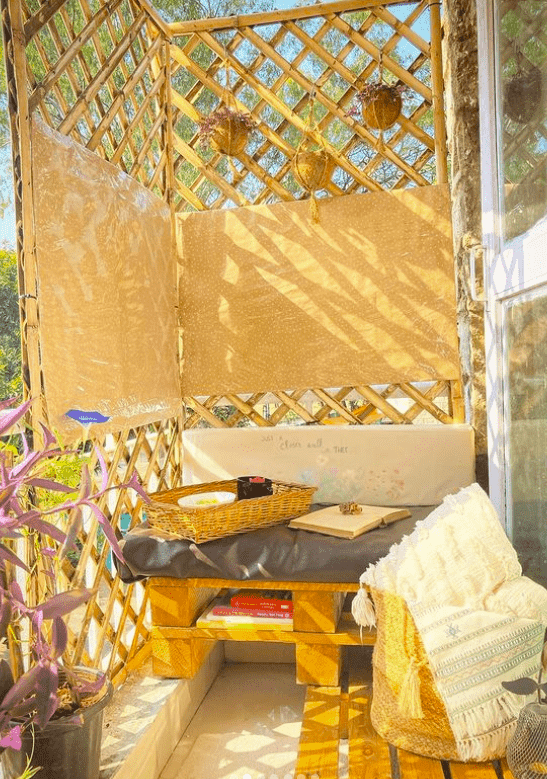
While we mainly consider privacy as blocking out views, we could also look at hiding areas. For example, you might want to use lattice privacy panels to cover your hot tub, trash can area, or AC unit.
For these, freestanding/folding lattice panels (such as these) are best. They won’t completely block the view but do enough to break it up. But if you want complete privacy, consider using opaque panels.
Pros
- Easy to use
- No installation needed
- Ideal for blocking things like bins or AC units
Cons
- Won’t fully block the view
Final Thoughts on Privacy Lattice Panels
Hopefully, you’ve now got some inspiration for how to use a lattice for privacy. They’re surprisingly versatile and are ideal for balconies. So, figure out what you want to make private and see which option works the best!

